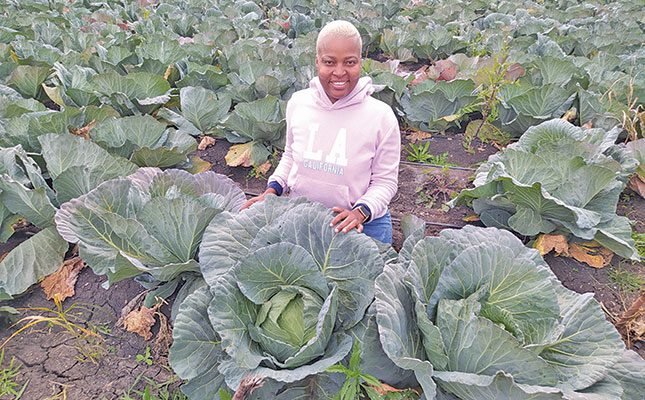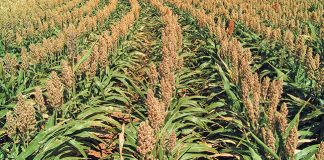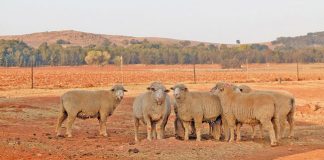
Photo: Siyanda Sishuba
Koketso Baloyi Mofokeng, the owner of Diatla Tshweu Farming, was born and raised on a farm in De Wildt, North West, not far from Ga-Rankuwa, near Pretoria. Her maternal grandmother, Agnes Makhanane Baloyi, was a farmworker here for 37 years. Mofokeng was raised by her grandmother after her mother’s untimely passing when she was still a child.
READ The pitfalls and benefits of diversifying your farming operation
Growing up on the farm, the young Mofokeng was given many responsibilities, including assisting with fertilising the crops. This helped to lay some of the groundwork for her later full-time farming career, which took off in 2018, and today she produces cabbage, green beans, green peppers, and spinach.
Photography
Before going into farming, however, she had a stint as photographer. “I started photography in the 10th grade to make money for tuition and to look after myself and my son,” she recalls.
After school, she studied photography at the Tshwane University of Technology, and went on to work for herself, photographing social events such as weddings and birthdays, and in 2013 even started her own studio with the help of her aunt, Tebogo Tseka.
However, she became unhappy in this profession, and admits that she did not enjoy “the photography world”.
Nonetheless, when she began farming, she continued her photography career as a side hustle to help improve her cash flow.
Encouragement
“I always wanted to farm but was sceptical as I’d been raised by my grandmother, who was a farmworker for many years. I saw how underpaid the farmworkers were, and how we grew up in poverty. I always thought farming was for rich people and only the poor were meant to be farmworkers. This was until my husband, Katiso, convinced me to start farming,” she says.
Katiso, an engineer, not only encouraged his wife to follow her passion, but helped her launch her business and complete online agriculture courses.
READ Helping unemployed graduates to find work
Mofokeng stresses, however, that even with Katiso’s help, farming has been challenging, and it is “not a get-rich-quick scheme”.
She adds that she is also grateful to her neighbouring farmer, whom she calls Oom Piet, for his advice on crop production.
“He’s one of those people who, even if you see a small fly on your crops, knows what to do.”
Farming equipment
Mofokeng began by renting land from the Agricultural Research Council and other farmers. In the first two years, she harvested an impressive crop, but in 2020, “things started to become shaky”. She lost 110 000 cabbages when the water pump broke, and the farm manager was unable to resolve the problem.
Fortunately, help was at hand: the Gotsube le Thothwe Communal Property Association heard about her loss and got in touch via Twitter. In 2022, the association helped her move her business to the farm Kareepoort in Sonop, 20km from her previous farm.
Despite the help, the loss had been devastating: she had had an off-take agreement with a supermarket, and was expecting R920 000 on completing the contract. However, with 5ha of cabbages gone, she lost the contract, as well as around R380 000 in input costs.
READ Optimising fuel usage on your farm: Part 1
In November 2022, disaster struck again when she lost another harvest to hail, leaving her unable to pay salaries and rent. Once again, Gotsube le Thothwe Communal Property Association proved understanding and helpful when she was not able to meet her rent commitments.
Mofokeng’s difficulties were still not over: in November 2022, she lost 6ha of spinach that was due to be supplied to the King Fresh Market, for which she has a contract to supply 1 500 bundles twice a week.
“These challenges have been a major setback because it becomes difficult to reinvest in the farm, and we can’t afford to pay for crop insurance. Most of the profit has to go back into the business,” she explains.
She adds that vegetable crop insurance is particularly pricey, as they are riskier to produce than grains.
Mofokeng has also experienced theft on the farm, which has added to her burden.
“I had to take out a loan to plant again even though I was trying to avoid [getting a loan] from the bank because of high interest.”
Another challenge is the lack of electricity on the farm, which has forced Mofokeng to rely on a generator, increasing her input costs.
She also does not own any implements, renting them from the property association or its members.
“We sometimes miss a planting season because we’re late for plant preparation,” she says.
“We would like to apply for funding for a tractor; we can’t afford to miss planting seasons.”
Mofokeng has access to 18ha, but currently uses only 4ha, with about 1ha planted to each crop.
She says she will only buy her own farm once she is more secure financially. She advises aspiring farmers to begin production on a small plot of land, until they are able to produce on a larger area.
“Even with finance, before starting your farming business, take your time to explore funding or investment options that will not leave you bankrupt in case of a crisis. Take your time, be focused, and know what you want to achieve with your business. Always be willing to work hard and smart,” she says.
Mofokeng employs temporary workers, who work mainly during the planting and harvesting seasons. During the cabbage-planting season, for example, she hires three workers.
The farm also provides unpaid in-service training to students from the Tshwane University of Technology. Mofokeng can accommodate three or four at a time.
Cabbage
Mofokeng’s day-to-day routine starts with an inspection of her crops, and she goes diligently up and down the rows, checking each plant.
“I monitor the cabbages daily, but inspect green beans only when they’re flowering,” she says.
She employs an inter-row spacing of 30cm to 45cm for cabbage, with a planting depth of 30cm. Each row is appropriately named to indicate when the crop was planted, which helps her keep track.
Before planting, manure is applied directly on top of the soil, which is clayey. Mofokeng says this is because the soil holds a great deal of water and takes some time to dry.
Cow manure, she says, is an excellent source of essential nutrients that are needed for the plants to reach their full potential. It also provides a source of organic matter that helps break up clay soils and improve water retention in sandy soils.
The soil is then ripped and disced twice, as it does not break down easily. It is then levelled, and ridges created for the crops. A different planting approach is used for each vegetable type.
Cabbage seedlings are bought from Plant Forum in Pretoria and delivered directly to the farm; the spinach is planted by seed; and green pepper seedlings are grown from seed on the farm and transplanted.
Gypsum is applied immediately after planting to provide the plant roots with calcium and reduce the salt content of the soil. Two weeks later, Mofokeng applies LAN, followed by a second application two weeks later. After another fortnight, she applies 1:0:1 fertiliser in liquid form. This, she explains, helps with head formation.
After this, she applies fertiliser made to her own formula, which she says helps the cabbage reach a weight of more than 6kg/head.
Pests
“We don’t have a big challenge with pests, except in the case of cabbage,” says Mofokeng. “Cabbage is really loved by pests, so we make sure we apply different pesticides throughout the season. If the pest reaches the head, it’s game over for your cabbages.”
She sprays for pests such as worms and thrips every seven days after transplanting.
Mofokeng uses a sprinkler system for the green beans and green peppers, and drip irrigation for the cabbage and spinach. The first 28 days after transplanting are critical for cabbage production, as this determines the growth of the final product, she says.
“On these days, you have to inspect the crops. We harvest after 90 to 120 days.”
Mofokeng plants the Novoton cabbage variety, which she says is well suited to the climate and soil in her area. Novoton produces a large, round cabbage, is highly productive, and has a small core. It is also a vigorous plant.
READ More sporadic cabbage pests
Companies such as Agriboost and Amron Chemicals have been helpful in offering mentorship on the use of fertilisers and pesticides, she adds. Mofokeng is striving to employ more women and to increase support for the charities with which her farm is involved.
Surplus crops are sent to the Sonop Old Age Home in Brits, and to the local primary school, Laerskool Sonop. Despite all her trials, Mofokeng remains optimistic and determined, and hopes to invest in a packhouse and accommodation for her employees.
Direct message Koketso Baloyi Mofokeng on Twitter @kokiebaloyi26.










